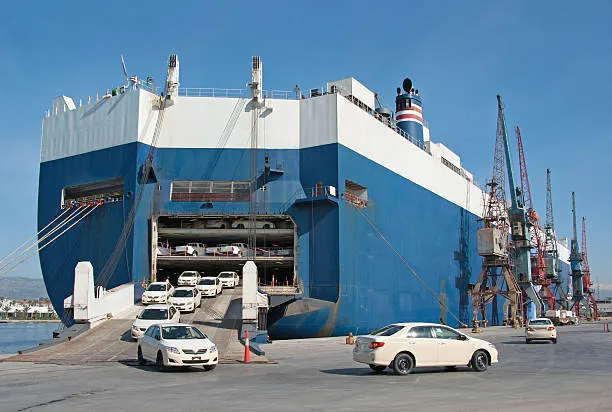Mastering the Art of Investing for Wealth Creation and Sustainability
Investing is no longer just a buzzword reserved for financial experts or seasoned professionals. Today, anyone can build a solid financial future through well-planned investments. Whether you are new to the world of finance or looking to refine your strategies, the key to successful investing lies in mastering the basics while keeping an eye on long-term sustainability. This guide will walk you through essential principles, strategies, and mindsets that help investors create wealth while ensuring financial sustainability.
1. The Importance of Setting Financial Goals
Before diving into the complexities of investment options, it’s crucial to define your financial goals. Investing without a clear purpose is like setting sail without a destination in mind. Start by asking yourself what you want to achieve:
- Are you saving for retirement?
- Do you want to purchase a home in the next few years?
- Is your goal to build wealth that can be passed on to future generations?
Clearly defining your objectives will shape your investment strategy and influence your risk tolerance, timelines, and asset allocation.
2. Diversification: Spreading Risk for Greater Stability
One of the key principles of successful investing is diversification. Simply put, diversification is the practice of spreading your investments across different asset classes, such as stocks, bonds, real estate, and mutual funds, to minimize risk. By doing so, you reduce the chances of a single asset or market downturn wiping out your entire portfolio.
For instance, you might choose to invest in mutual funds, which offer a convenient way to diversify your investments without having to pick individual stocks. These funds pool money from various investors to invest in a diversified portfolio of assets, helping you spread risk more efficiently.
You can also consider diversifying into different sectors, such as stocks, real estate, or the commodity market, which includes assets like gold, oil, and agricultural products. The commodity market often behaves differently than stocks or bonds, offering another layer of protection against market volatility.
Diversification doesn’t eliminate risk, but it reduces it, ensuring that your portfolio remains more resilient over the long term.
3. Understanding Risk and Reward
Every investment carries some level of risk, but understanding and managing that risk is what separates a successful investor from the rest. The general rule of thumb is that the higher the potential return, the higher the risk. Low-risk investments, like government bonds, offer stable returns but generally lower gains. In contrast, high-risk assets like stocks have the potential for higher returns but come with greater volatility.
Your risk tolerance depends on factors such as your age, financial situation, and long-term goals. Younger investors can typically afford to take on more risk, as they have more time to recover from potential losses. However, as you approach retirement, your focus might shift towards preserving wealth rather than maximizing returns, leading to a more conservative investment strategy.
Balancing risk and reward is about creating a diversified portfolio that aligns with your financial goals and comfort level.
4. Compounding: The Magic of Long-Term Growth
One of the most powerful concepts in investing is compound growth. When you invest in assets that appreciate or provide dividends or interest, those gains can be reinvested to generate even more returns. Over time, this compounding effect can lead to exponential growth in your wealth.
For example, if you invest $1,000 at an annual return of 8%, after one year, your investment will be worth $1,080. If you leave those earnings invested, the next year you’ll earn 8% on $1,080, and so on. The longer you allow your investments to compound, the greater your returns.
This is why it’s essential to start investing as early as possible and to stay invested for the long term. The sooner you begin, the more time your investments have to grow.
5. The Role of Sustainability in Modern Investing
Sustainability has become an increasingly important consideration for investors. As environmental and social issues become more prominent, many are seeking to align their investments with their values. Sustainable investing, also known as ESG (Environmental, Social, and Governance) investing, focuses on companies that operate in a socially responsible and environmentally friendly way.
By investing in businesses that prioritize sustainability, you not only contribute to a better world but also position yourself for long-term growth. Companies that adopt responsible practices are more likely to navigate future challenges, such as climate change regulations or shifts in consumer preferences, better than those that do not.
6. Staying Informed and Adapting to Changes
The investment landscape is constantly evolving, with new opportunities and challenges emerging regularly. Staying informed about global economic trends, market fluctuations, and technological advancements is essential for making smart investment decisions.
While it’s important to stick to your long-term strategy, it’s also crucial to remain flexible. Reassessing your portfolio periodically allows you to make necessary adjustments based on changes in the market or your financial situation. For example, as you age, you may want to shift more of your investments into lower-risk assets.
You can stay informed by following reputable financial news sources, consulting with financial advisors, and continually educating yourself on investment strategies.
Conclusion
Mastering the art of investing requires a combination of knowledge, strategy, and discipline. By setting clear financial goals, diversifying your portfolio, managing risk, and focusing on long-term growth, you can create a sustainable path to wealth creation. Sustainability, both in terms of your financial strategy and the companies you invest in, is becoming increasingly important as the world evolves.
With patience, consistency, and informed decision-making, you can achieve financial freedom while contributing to a more sustainable future.






